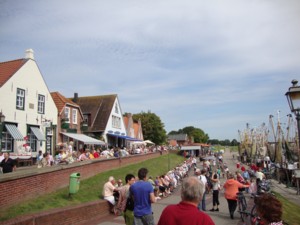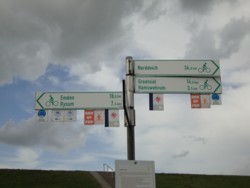Low German (Plattdütsch)
Low German :: Language-genetic affiliation
Low German - so called since it is spoken in the lowlands of northern Germany - is a continental West Germanic language, part of the geographical continuum of German and Dutch dialects. It is spoken in several different dialects. Those in the western regions are very closely related to dialectal varieties spoken across the Dutch border. Historically, Low German is regarded as a direct descendant of Old Saxon, a language attested in few documents from the ninth century, and very closely related to Old English, from which it was separated in the fifth and sixth centuries.
Low German :: Historical distribution Map
Modern Low German was spoken north of the so-called Benrath Line, which stretches roughly from Düsseldorf to Berlin, in an area covering the entire North Sea and Baltic coasts, from Friesland and Ems estuary in the west to Pommerania and Prussia in the east. Between the twelfth and sixteenth centuries it was adopted by the city-states belonging to the Hanseatic trade union as an official language and served as the dominant language of commerce and administration not just in northern Germany but also throughout the Baltic area, where it was common as a second language. During this period it succeeded in replacing Frisian as the dominant and official language of the North Sea coastal areas in Germany, and eventually it also became the spoken language of majority in these regions. With the spread of the reformation and the Lutheran Bible translation, Low German gradually gave way to the emerging Standard German as the language of literacy and eventually as the spoken language of the urban centres. Low German became synonymous with the vernacular language of the rural population and smaller towns.
Low German :: Present-day distribution, status and endangerment

The decline of Low German began with the advance of industrialisation and economic mobility following World War II. It retreated first in more industrialised areas such as the Ruhr district and the areas surrounding major cities such as Hamburg and Hanover, in the northern districts of East Germany, as well as in the easternmost territories such as Pommerania and Prussia as a result of the expulsion of ethnic Germans, but continued to be spoken in the northernmost coastal regions. However, with the gradual decline of agriculture in these areas, too, and the shift to reliance on work outside the home village, parents ceased to speak Low German to their children during the 1960s. Use of Low German has since become limited to the older generations, with the exception of a small number of young families scattered throughout the coastal regions who continue to use the language. Among the older sector of the post-war generation there is nevertheless considerable language activism involving literary productions, theatre and regular broadcasting in local and regional media, though use of the language in the public domain is largely limited to folkloristic events and emblematic functions of flagging regional identity.
Low German :: General structural characteristics
Within the continuum of German-Dutch dialects (or the continental West Germanic dialect continuum), Low German historical phonology is characterised on the one hand by the retention of the stops /p, t, k/ in words like op 'on, up', tiid 'time' (cf. 'tide'), and maken 'make', aligning it with the northwestern Germanic languages English and Dutch, while on the other hand it retains the monophthong sounds in words like tiid 'time' (cf. 'tide') and huus 'house', giving it an archaic character shared by the Scandinavian languages in the north, but also by Swiss German in the extreme south. In morpho-syntax, Low German is similar to Dutch in reducing the case and gender system but maintaining a degree of differentiation in the verb conjugation. Like English and the Scandinavian languages, it has lost the perfect prefix *ge-.

Low German :: References to Yaron Matras's work
- 2003. with Gertrud Reershemius. A grammar of Low German (East Frisian variety). Munich: Lincom Europa.
- 2000. Fusion and the cognitive basis for bilingual discourse markers. International Journal of Bilingualism 4:4. 505-528.